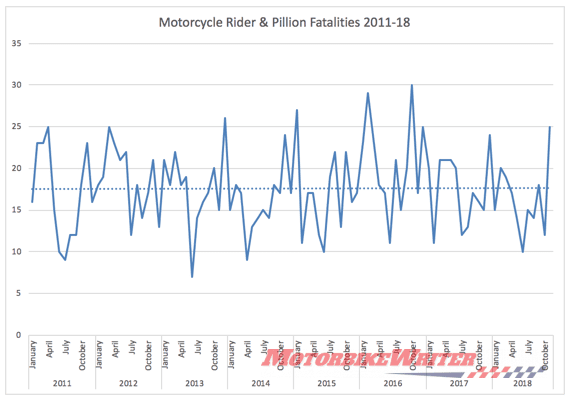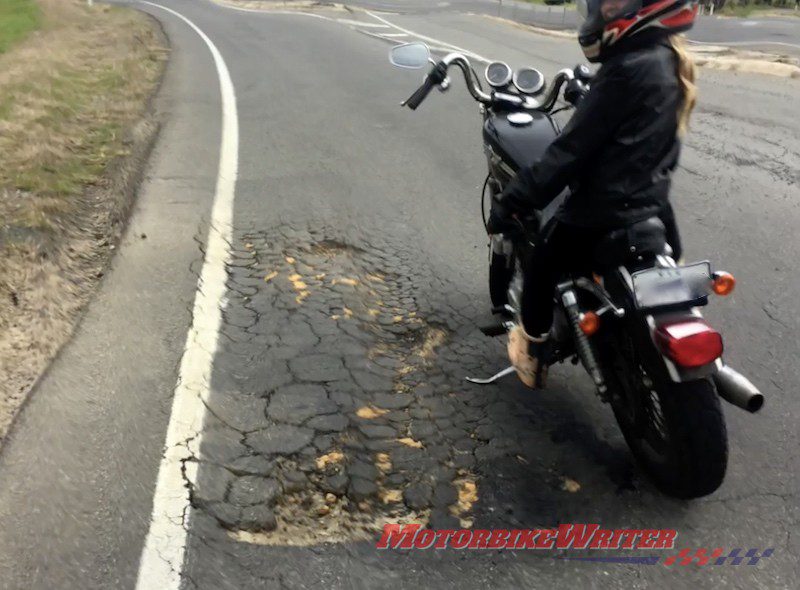The motorcycle road toll can be reduced by better speed and alcohol/drug use enforcement, safer motorbikes, mandatory helmet laws and improved roads, according to an international report.
These are key points in the latest World Health Organization Global status report on road safety 2018 report released this month. The report is only released every two or three years.
Flat toll rate
The international report also points out that the motoring fatality and injury rate has remained fairly steady as a proportion of population over the past few years.
In Australia, motorcycle crash fatalities have remained flat since 2011 despite an almost doubling of motorcycle registrations in that time. That actually means a decreasing rate of motorcycle fatalities as a proportion of riders.

Of course, every death is lamentable, but the selective quoting of motorcycle crash statistics, especially during the Christmas/New Year holiday season, can be misleading.
It also serves to demonise riders as having a death wish and therefore not worthy of consideration by other road users.
International report
The WHO report says progress in reducing road fatalities and injuries has mainly been made in high-income countries.
In these countries, there is a high level of enforcement of speeding and drink driving, ABS on motorcycles (mandatory in Australia for bikes over 125cc from November 219), mandatory helmet (99% compliance in Australia) and improved roads, it says.
No doubt politicians and police will just seize on the first issue to raise speeding fines and enforcement.
But they would be ignoring the fact that this is an international report representing 175 countries. By comparison, the low-income countries included in the report (such as Afghanistan) have little to no enforcement of speed or drug/alcohol-influenced riders, no or lax helmet rules and poor roads.
The only category where Australia compares is in the standard of our roads.

WHO says 67% of motorcycle travel in the world is on substandard roads. That surely must include Australia!
Over the past few years we have reported numerous cases where riders have crashed in unacceptable road conditions thanks to poor design, inferior surfacing and a lack of maintenance.
The WHO report says conditions that make a road unacceptable for motorcycle use include a poor road surface and trees too close to the road. In some states, wire rope “safety” barriers are also too close to the road!
(It also mentions separate motorcycle lanes which some Asian nations with much higher proportions of motorcycles have implemented or are considering. We doubt motorcycles will ever have separate lanes in high-income nations.)
WHO says that by 2030, all new roads should “achieve technical standards for all road users that take into account road safety” and “more than 75% of travel on existing roads is on roads that meet technical standards for all road users”.
That’s a long time to wait for appropriate roads that should have been paid for by our hard-earned taxes.



